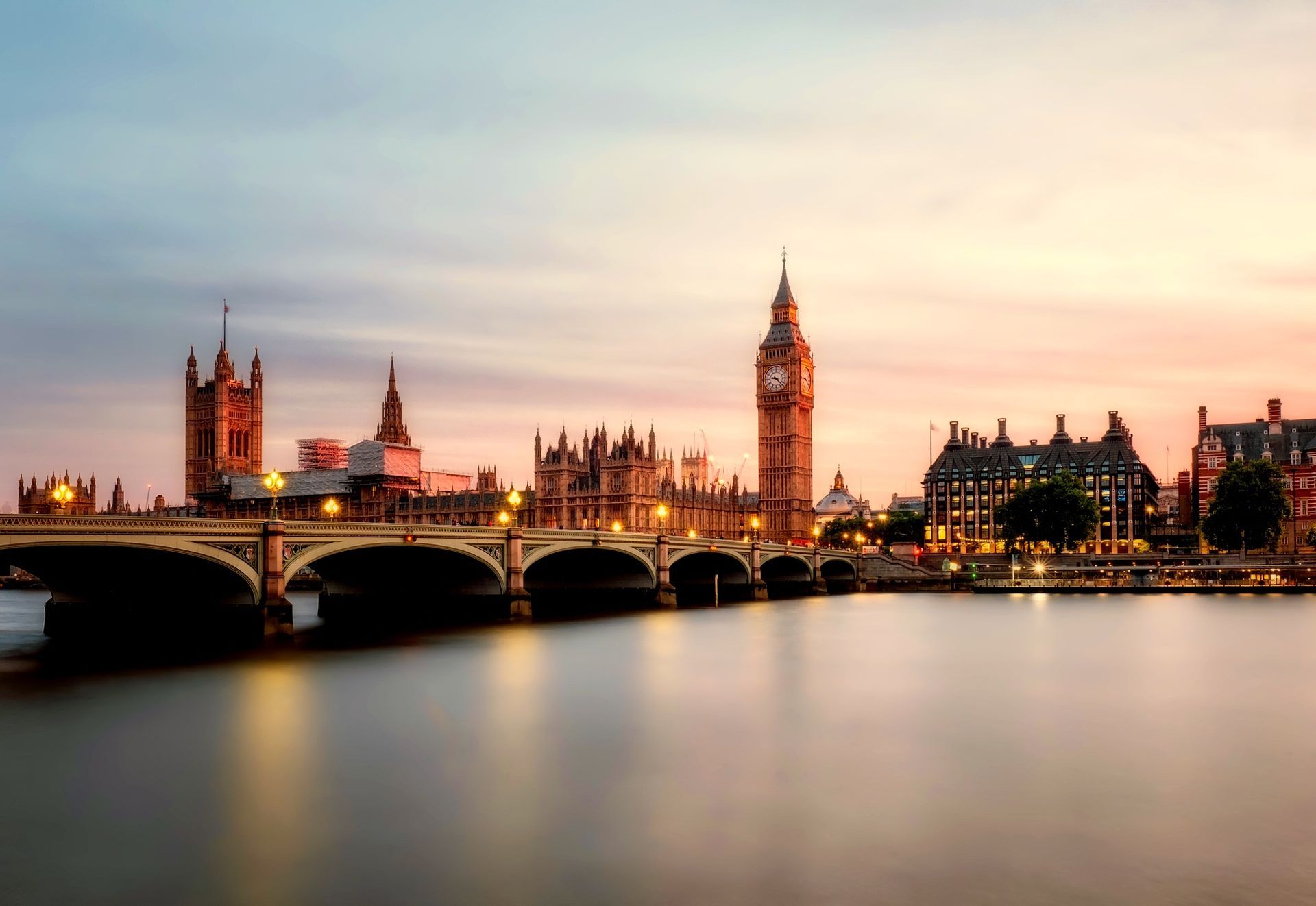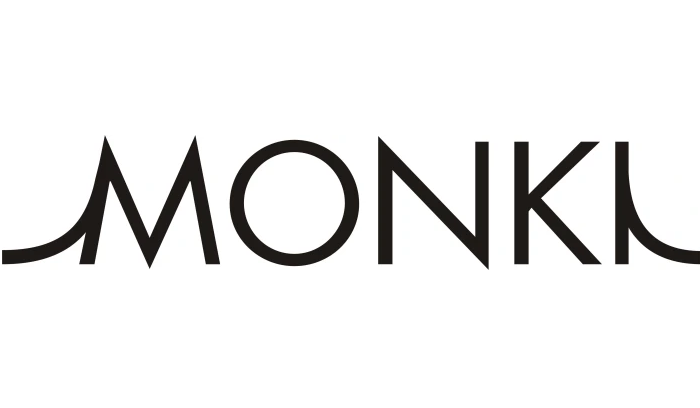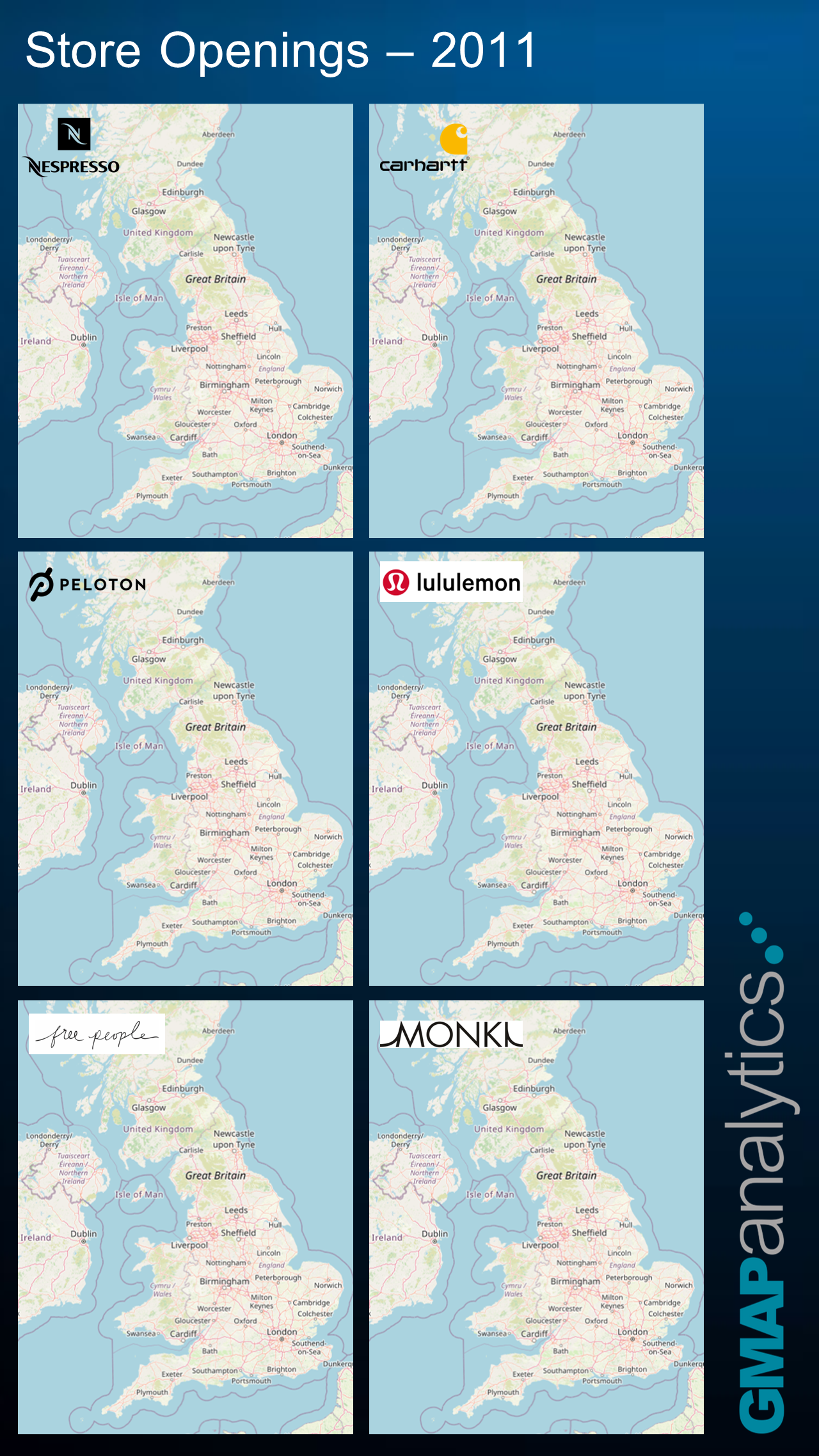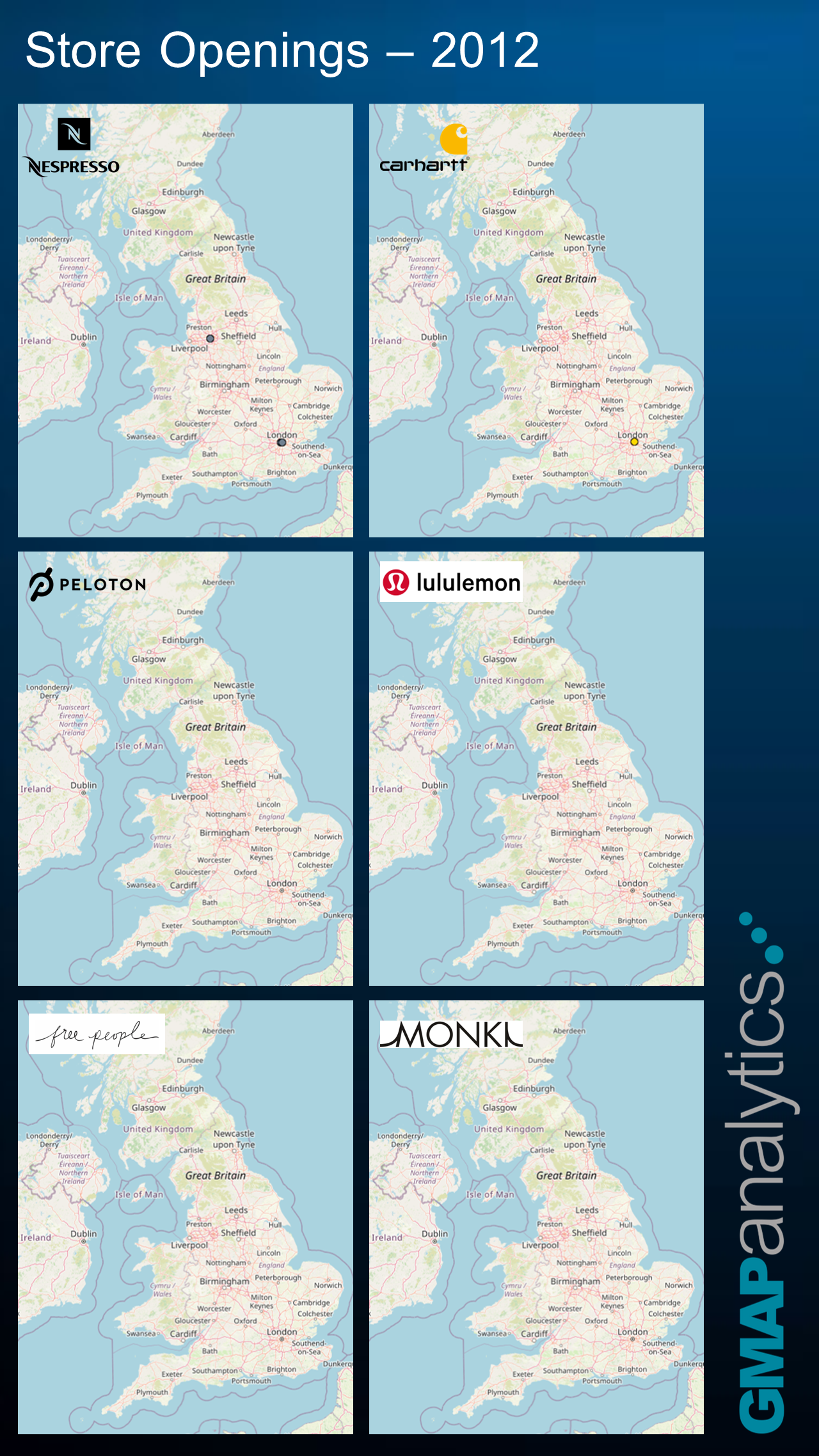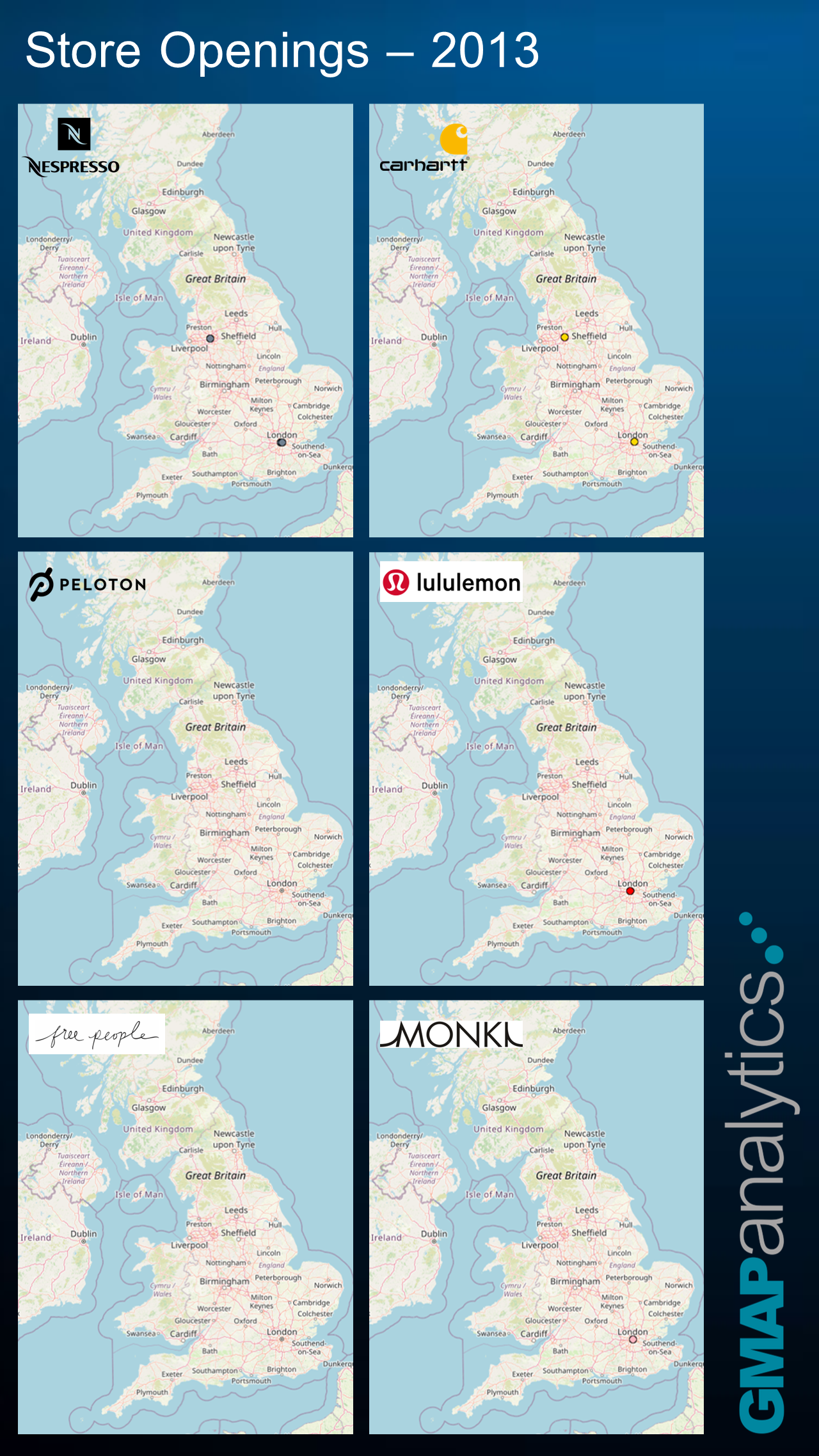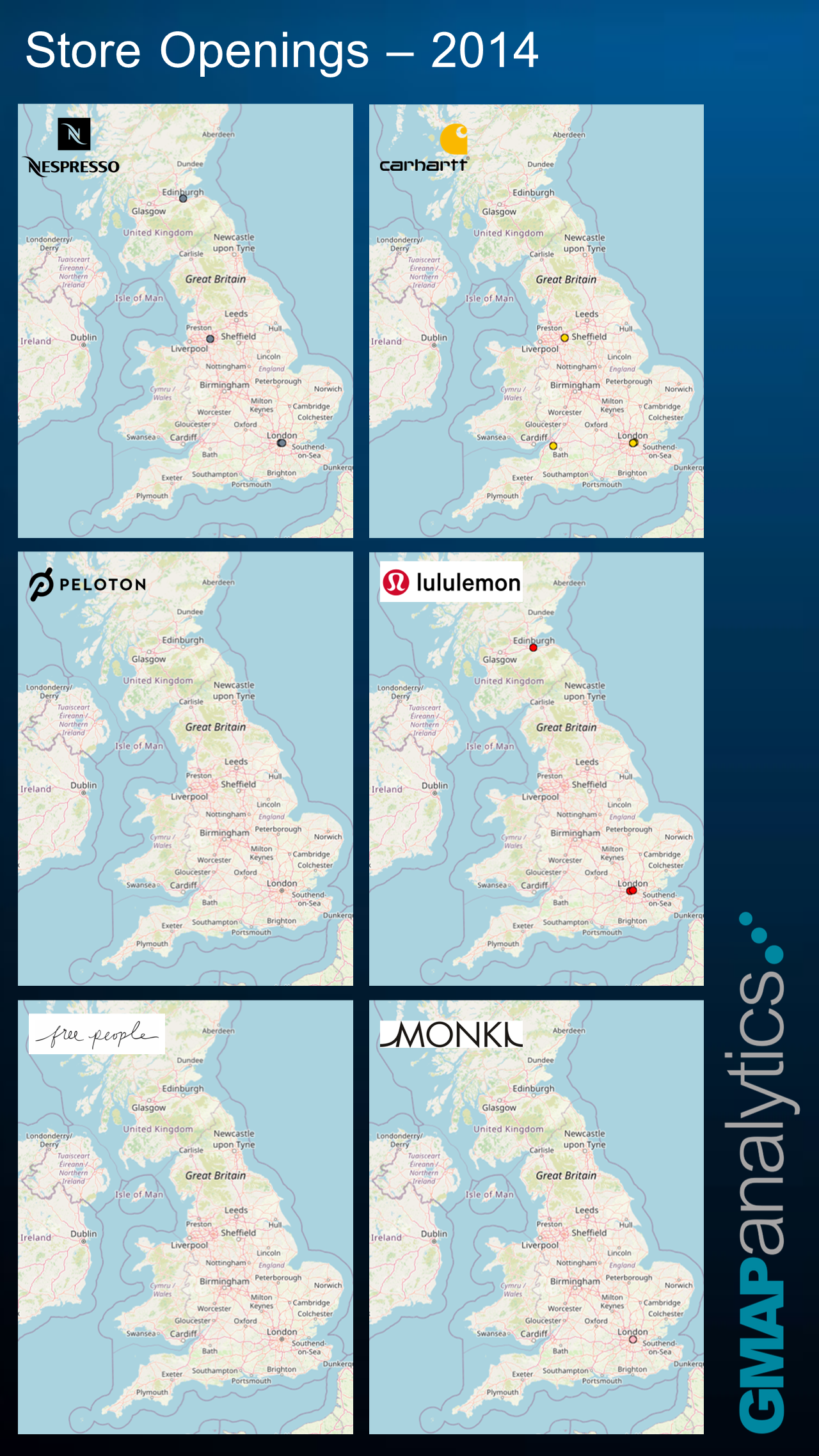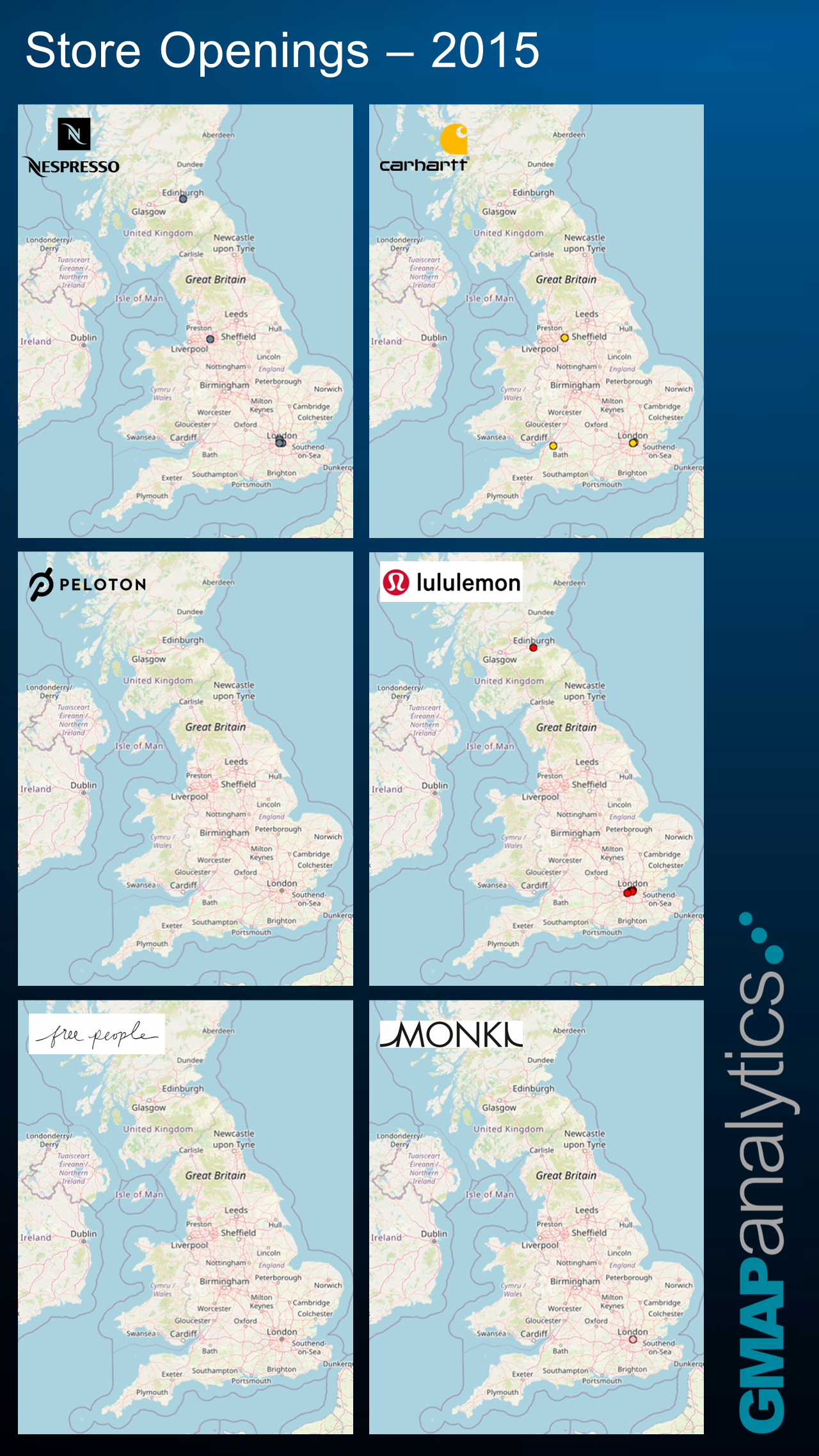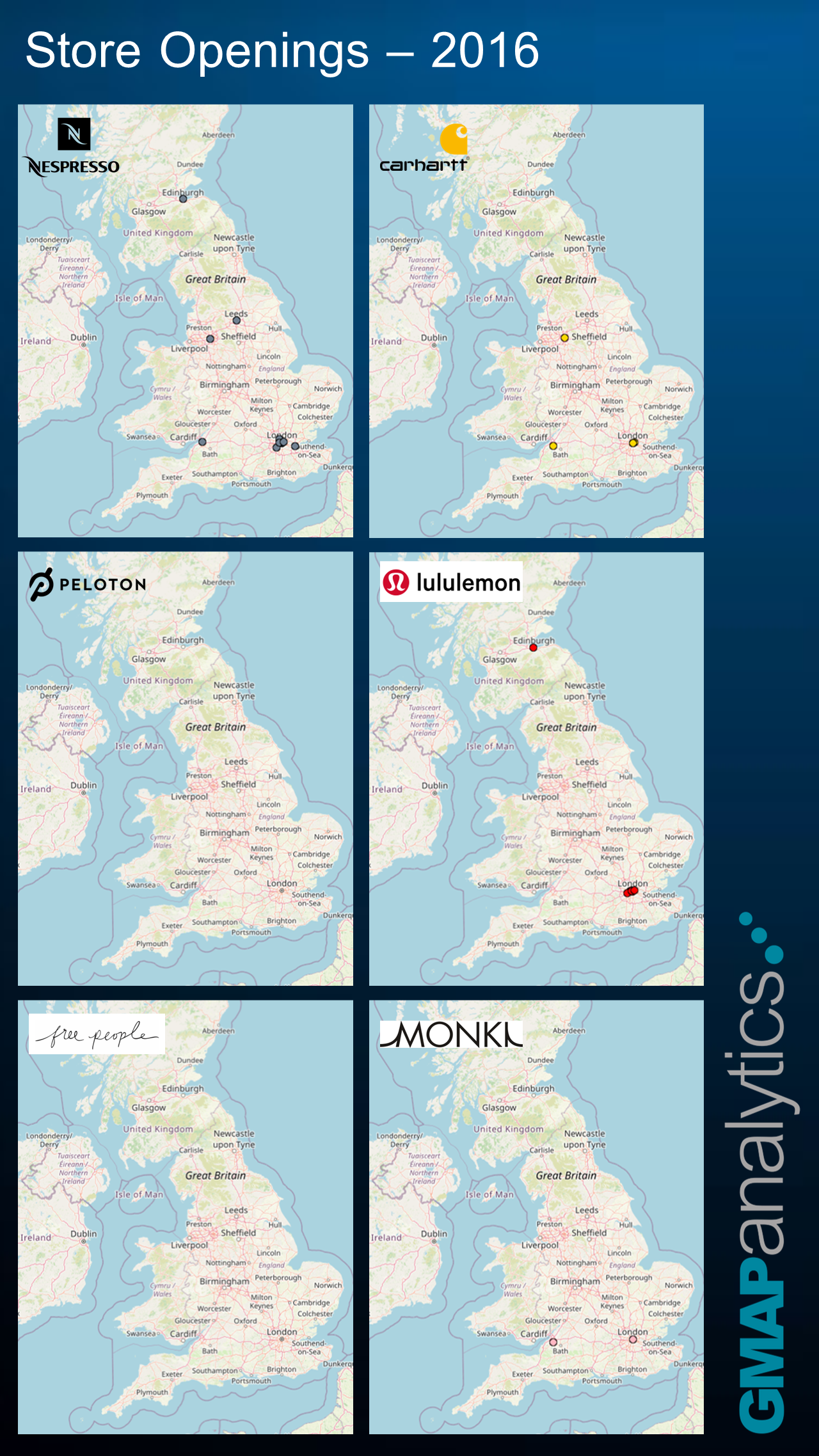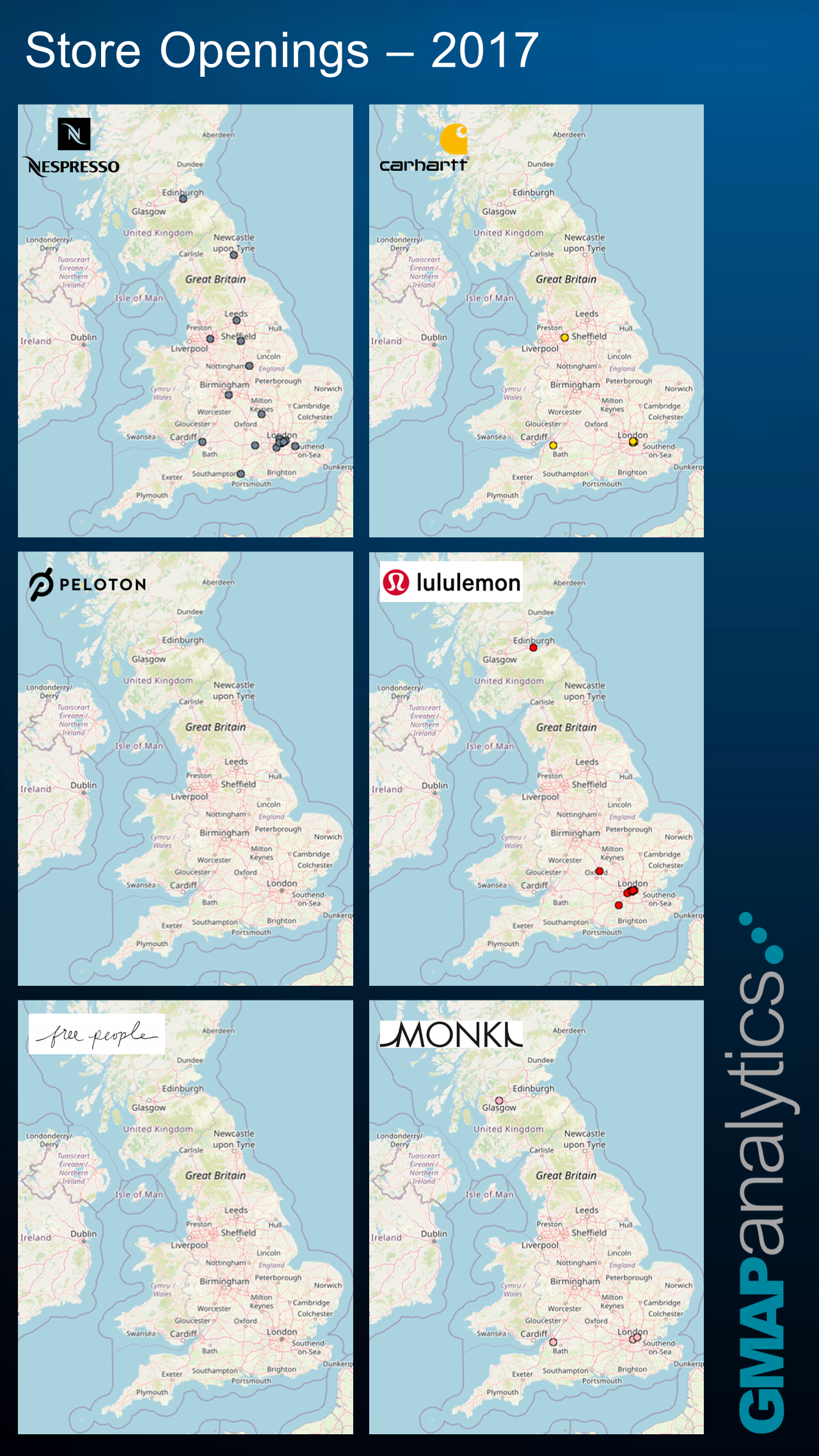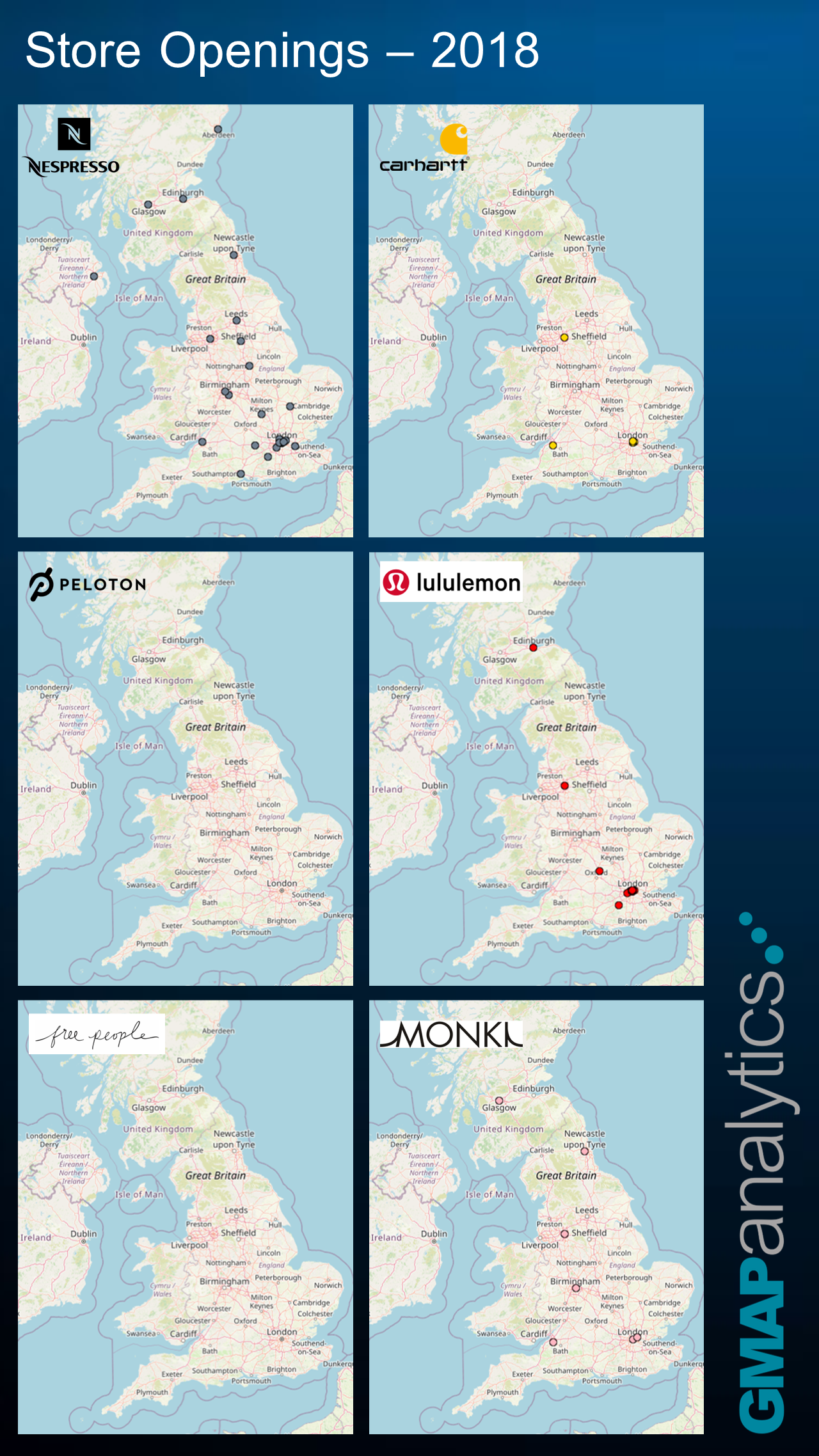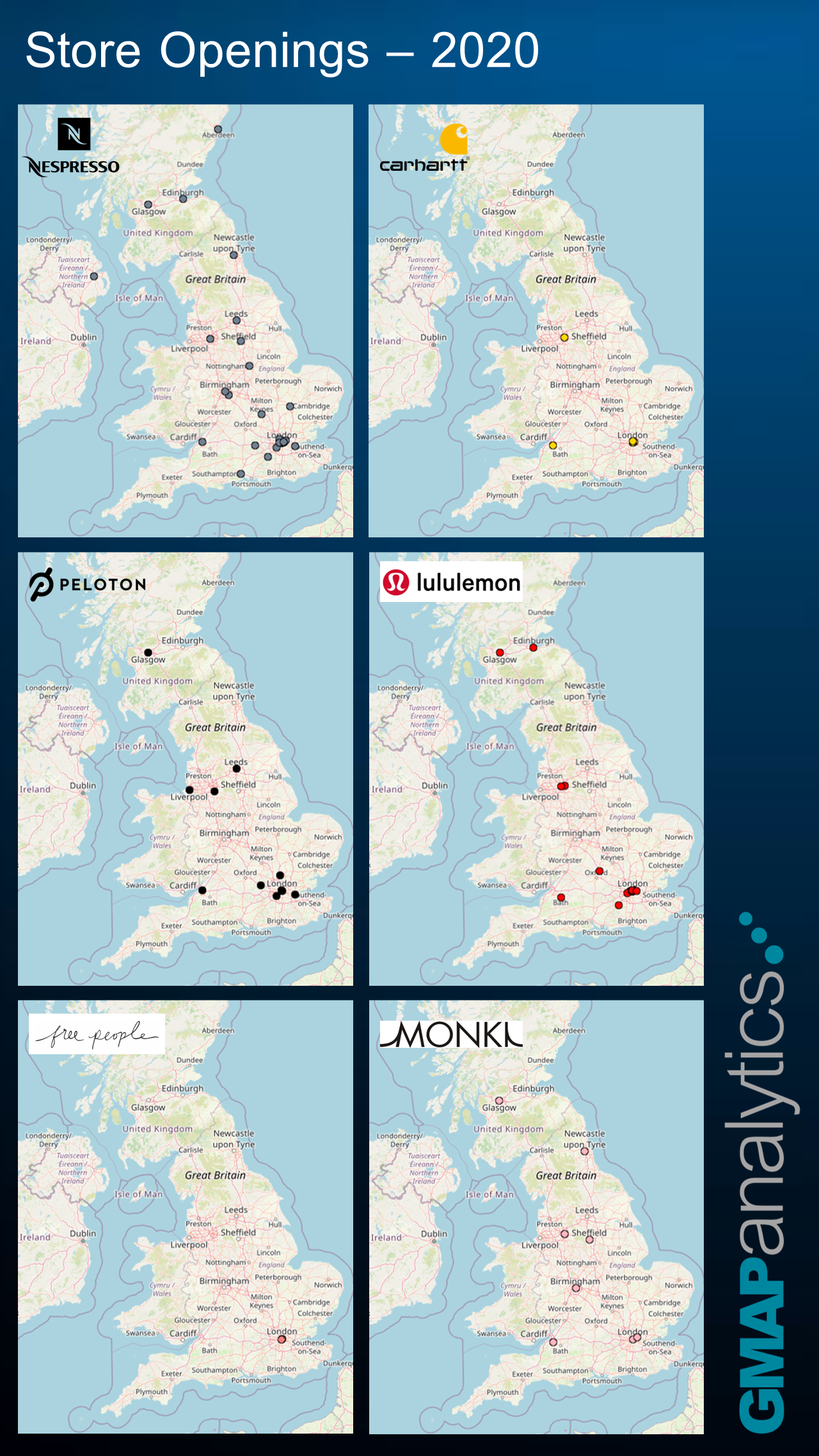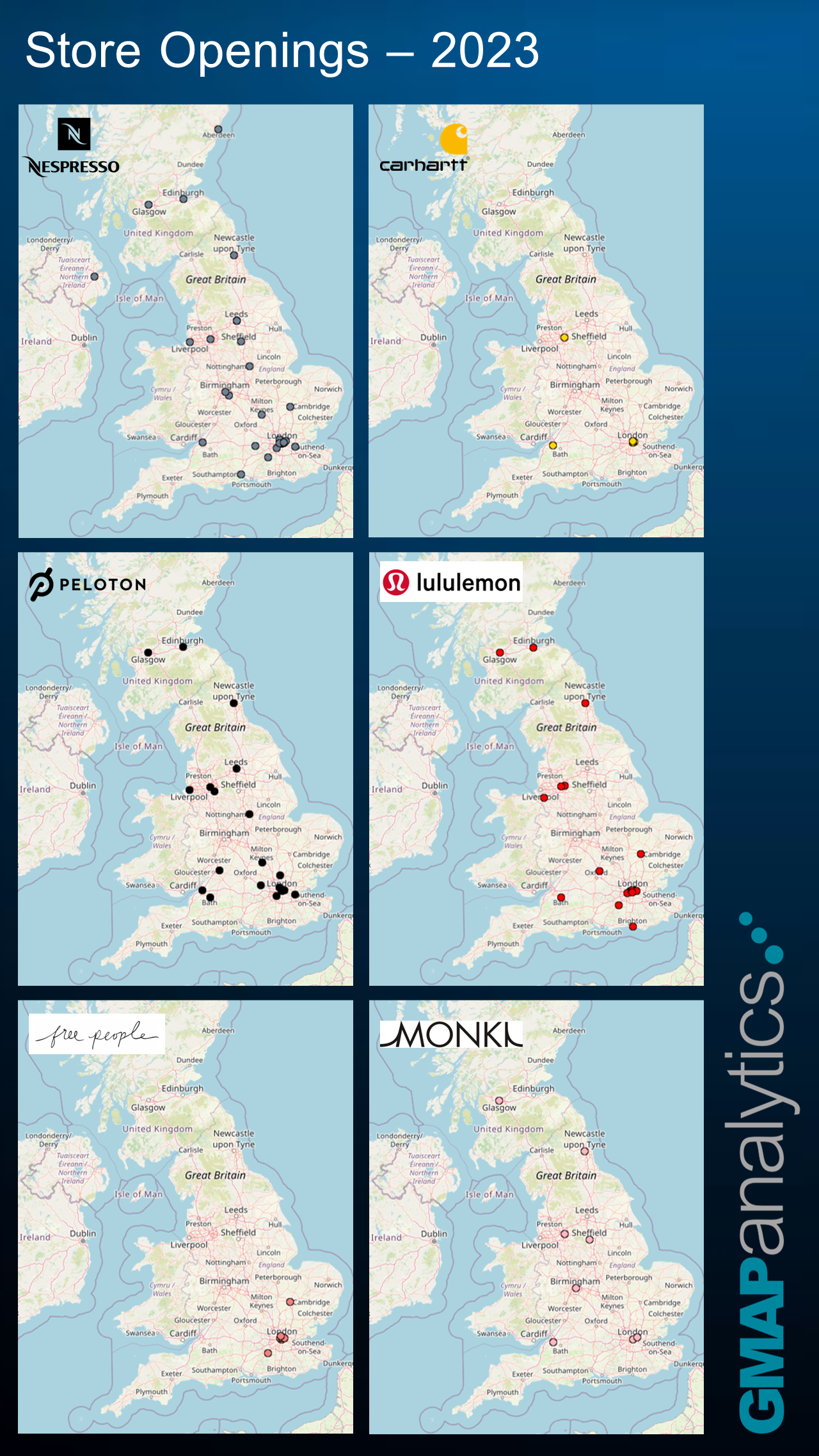The Location Planning Strategies of Six Retailers Entering the UK
24th May 2023
Exploring the Location Planning Strategies of Six Retailers Entering the UK
At GMAP, we often work with international retail brands who are looking at new market entry. With many asking, where should they go first? As you would expect, many international retailers coming to the UK are undoubtedly targeting London-first. However, is this always the case?
We have explored this further by examining the growth strategy of six key international retail brands that have entered the UK market since 2011 and become established names in our retail landscape. These brands include:
Nespresso
Whilst Nespresso didn’t open its first UK shop until 2011, the first idea of Nespresso’s pod coffee capsules date back to 1975, when an employee of Nestlé first pioneered the idea. It took a further decade for the first machines to be launched to consumers in Switzerland, followed by Japan, France, and Italy. Their first concept Nespresso boutique was launched in Paris in 2000, and they now have over 700 sites worldwide and 29 in the UK, including their own stores and pop-up shops.
Nespresso defied the “London-first” location strategy adopted by many retailers when they opened their first UK boutique in The Trafford Centre in April 2012. In June and July of the same year, they opened two sites in London including their Regent Street Flagship. In 2014 they opened in Edinburgh, followed by two more in London in 2015. In 2016, they opened in Bluewater, Bristol, Leeds and another site in London – this was in addition to two concessions in John Lewis stores in Kingston and Peter Jones on Sloane Square.
Nine Nespresso boutiques opened in the UK in 2017, including stores in Newcastle, Milton Keynes, Reading, Sheffield, Nottingham, Southampton, Birmingham, as well as two more in London. The following year, the opening of boutiques in Belfast, Aberdeen, and Glasgow ensured Nespresso was accessible to caffeine-lovers in almost all corners of the nation. They also opened stores in Guildford, Cambridge, and within the Selfridges in Birmingham.
Since 2019, growth of the Nespresso’s boutique portfolio has slowed. In 2020, Nespresso opened stores in London Bridge and a concession in Selfridges on Oxford Street. In 2022, they opened in Liverpool and relocated their Leeds store from Victoria Gate to Trinity Leeds.
In summary, Nespresso has proven that a London-centric approach doesn’t always need to be the rule for a blueprint to successful UK growth.
Carhartt Work In Progress (WIP)
Carhartt is a workwear apparel brand that was founded in 1889. On the centenary of the company’s founding, Work In Progress (WIP) Carhartt’s streetwear version, was launched. The first store was opened on Neal Street in London in 1997. However, it wasn’t until 2012 when Carhartt WIP started developing a UK retail network, with the opening of their store in Shoreditch. The following year they opened in the Northern Quarter in Manchester, then in 2014 a store in Bristol and two more sites in London. In 2017 they opened another site in by London’s Kings Cross and a second in the Northern Quarter of Manchester last year.
Although they have a relatively small network, the brand has witnessed phenomenal growth and has become a key streetwear fashion retailer in the UK and internationally. Their successful growth has been aided not only by their own stores, but have also been driven by their wholesale network, as their products are sold in array of shops including Urban Outfitters and John Lewis.

Peloton Interactive
Peloton Interactive, famous for their stationary bikes and interactive classes, sold their first bike in the US in 2013. In 2018, they announced plans to expand beyond the US to Canada and the UK. In 2019 they opened three UK stores, in Covent Garden, Bluewater, and Leeds.
Following the first Covid-19 lockdown, in August 2020, they opened seven concessions in John Lewis stores. Four of these were located in London and the South East, with the other three being in Manchester, Liverpool, and Bristol. They also opened their first Scottish store in Glasgow in October 2020. The following year they opened 3 more stores, including another in London, Bath, and Edinburgh, as well as 5 more concessions in John Lewis stores around the country. The last store they opened was in John Lewis in Milton Keynes in January 2022.
Their rapid expansion corresponds with the spike in popularity of the brand. This occurred around the time they came across to the UK, and during the Covid-19 pandemic– whereby people were looking for ways to exercise in their homes. Their location strategy has enabled them to have presence up and down the country. However, the question remains whether their growth was sustainable or does their luxury product have a smaller audience when people are no longer confined to their homes?

Lululemon Atheletica
Lululemon Althlethica inc. is a Canadian athletic apparel retailer specialising in yoga wear. Lululemon opened its first store in Vancouver in 2000. Today, they have around 570 stores internationally. In June 2013, they opened their first UK store in Westfield London. The following year, they opened their first European flagship store in London’s Covent Garden, and a store in Edinburgh later that year.
In 2015 and 2016, they opened four own stores in London, as well as a concession in Harrods. In 2017, they opened on Regent Street in London, Bicester Village near Oxford and Guildford. In 2018, they opened a concession in Selfridges London, followed by a store in Manchester’s city centre. They opened a second site in Manchester in Selfridges in the Trafford Centre the following year, followed by stores in Glasgow and London’s Canary Wharf. Since June 2020, they have opened stores in Bath, Cheshire Oaks, Cambridge, Brighton, and in the new Battersea Power Station retail development – as well as a concession in Fenwick in Newcastle.
Whilst in the early years, with the exception of Edinburgh, their growth was concentrated more to the South East, they now have a network covering a large portion of the national population. It will be interesting to see where they go to next.

Free People
Apparel retailer Free People is part of the Urban Outfitters, Inc. group, the first boutique opened in 2002 in the US. In January 2019, Free People opened their first store in the UK in London’s Covent Garden, followed by a second on the Kings Road in March 2019. They opened four more stores in London between 2020 and 2022. In January of this year, they opened their first site outside of London in Guilford, and another most recently in Cambridge.
Free People’s growth strategy so far has been very London centric; however, will their recent Guilford and Cambridge openings indicate they are looking to slowly expand across the nation?

Monki
Monki opened their first store in Gothenburg, Sweden in 2006. In 2008, they joined the H&M Group, and have since grown their portfolio across Europe and Asia to 17 markets. They opened their first store in the UK on Carnaby Street in London in February 2012. Their second UK store, in Bristol, wasn’t opened for another 4 years.
Since, they have opened stores in London’s Westfield Stratford, Glasgow, Manchester, Birmingham, Newcastle and Sheffield. With only two out of eight stores being in London, they are definitely not a London-only brand. Their growth strategy appears to target key UK student cities, which corresponds with one of the brands target consumers.
They haven’t opened any new stores since November 2019. This coincides with the H&M Group’s shift of concentration from growth, to focus on optimising their store networks. We shall have to wait to see whether they continue to invest in their store network, and whether they will continue targeting cities outside of London.

Our Thoughts: Did these brands have a London-first approach to their UK location strategies?
Each of these brands opened their first UK store in London, with the exception of Nespresso which first opened in Manchester. When looking beyond London, the cities that were popular cities to go next were Manchester, Edinburgh, and Bristol. This was followed by other regional cities including Leeds, Liverpool, Glasgow, Birmingham, Belfast, and Newcastle. Destinations in proximity to London, such as Guildford, Bluewater, Cambridge and Milton Keynes, were also popular.
Opening in a nation’s capital has its benefits, London being no exception. You immediately have access to a vast catchment, a high tourist population, key retail destinations, and operational advantages such as access to ports or airports. Furthermore, a brands concentration of its first few openings to one city has operational advantages. For example, a brands stores can share warehouses, transportation costs, and even resources such as store management.
However, brands must consider that over saturation in one city does pose a risk of cannibalising on their own store revenues; one store can steal customers from another due to overlapping catchments and therefore become inefficient. There is also a risk you are limiting your brand awareness to one part of the country, and missing huge opportunity in places where there could be large untapped customer demand – without such expensive unit rental leases.
Conclusion
As you can see no brand is the same, and each has to carefully consider their location strategy depending what their business looks like. For example: who is their target audience; what are their business objectives; and how strong is their brand attractiveness? This is why location planning and data-driven location intelligence is crucial to ensure a brand makes the right investments.
To find out more about GMAP’s intelligence data and software products, or our location planning consultancy services – get in touch at info@gmap.com.



